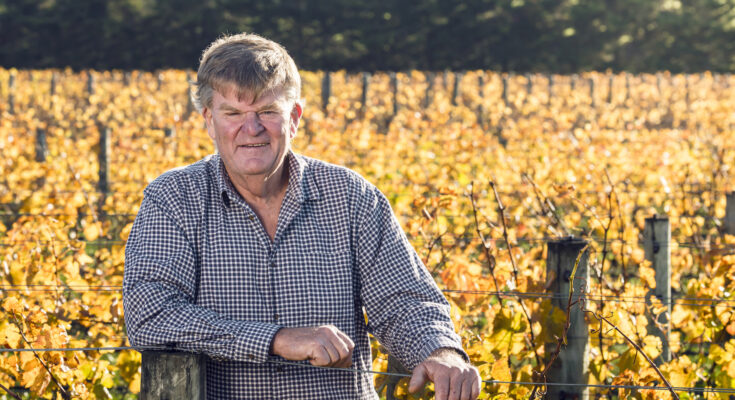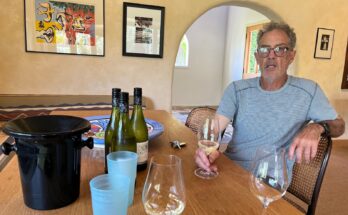During a recent flying visit to Wairarapa, I dropped in to see Larry McKenna – a man who helped put Martinborough on the world stage; first with his work at Martinborough Vineyard, and more recently with Escarpment. Jovial, passionate and dedicated, he’s often referred to as Larry McPinot, such is his excellent record with the intense, dark and full-bodied wines that most people associate with the region.
WineFolio: I’ve enjoyed my couple of days here in Wairarapa after a few days up in Hawke’s Bay. Stopped in at Johner and Urlar. Karl’s overseas obviously but I stopped and talked to Jannine Rickards. She’s making some great wines, and good to chat to.
Larry McKenna: Yes, she’s becoming a good asset for the district, getting involved. She’s really enthusiastic and turns up for all the tastings, and getting involved in the marketing of the district.
WF: I want to go everywhere and meet everyone too. It’s good to drop in on people who don’t have a cellar door but do make outstanding wine. When I was in Hawke’s Bay I went through a bit of ‘natural’ wine as well. And I do start from a slightly different angle to most writers. Often it’s all about the wine, but for me the first thing is the story. And the place, the people, the land. Once I’ve told that story, then you get to the wine in your glass. And hopefully you’re informed by that. Like a ‘virtual’ Cellar Door and wine tour.
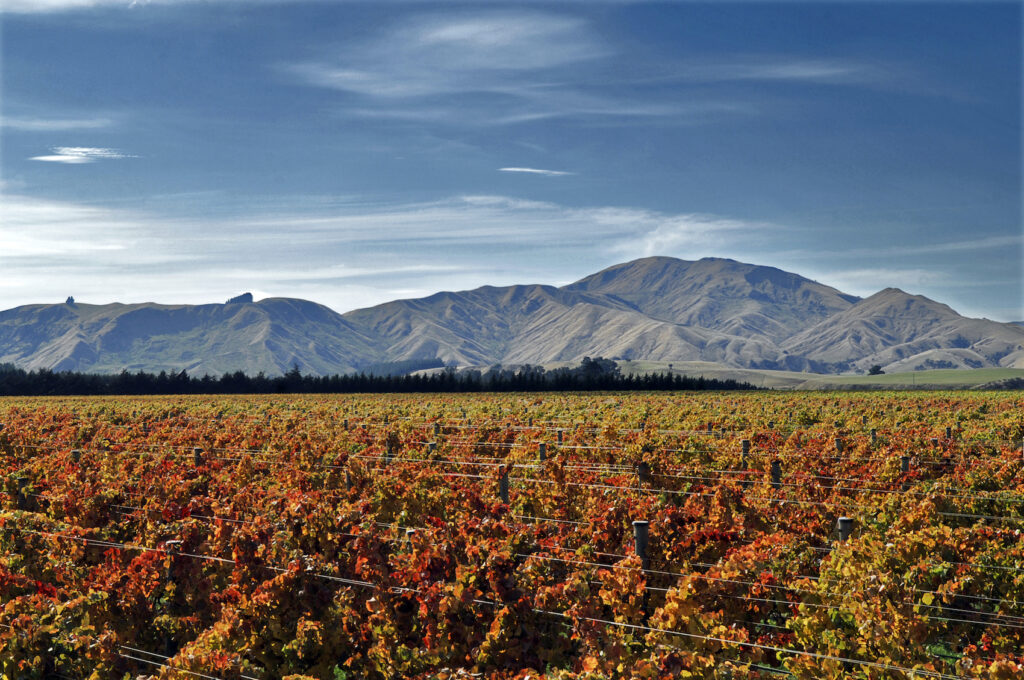
LM: You had some of the wine at Winetopia didn’t you?
WF: And other times of course. You can’t talk about discovering New Zealand Pinot and not come across your stuff. If I don’t get around and talk to people and put it all out there – in one place – and my aim is to have the best source of information, opinion and stories about New Zealand wine tourism there is – then it’s down to who’s got the biggest marketing budget? And I think people do appreciate me coming round, in person.
LM: Well, exactly. I’m very critical of writers who write about our business and our wines, who’ve never been here. In fact if they’ve never been here and they ask for samples, I suggest that first up – you come here and we’ll give you the samples and show you them first. That’s my position. But sometimes it’s people overseas and so on. The Australian ones we can service through Torbreck and most of the ones who are any good have been to New Zealand anyway.
But it is up to us when they are here – like the Pinot Celebration, then we put on an event that’s either side of it, and get them here as much as we can. Get a group together and show them around for a day.
WF: When I was down in Central last February they said “You should have come last week for the Pinot event”. But I can’t just speed date people I don’t know – you know like “Hi…Bye”, I want to get to know people first. Also, having grown up in Europe, I’d tried a lot of Burgundy before I was ever aware that New Zealand made Pinot Noir.
LM: You guys are lucky, because it’s right next door. That’s easy.
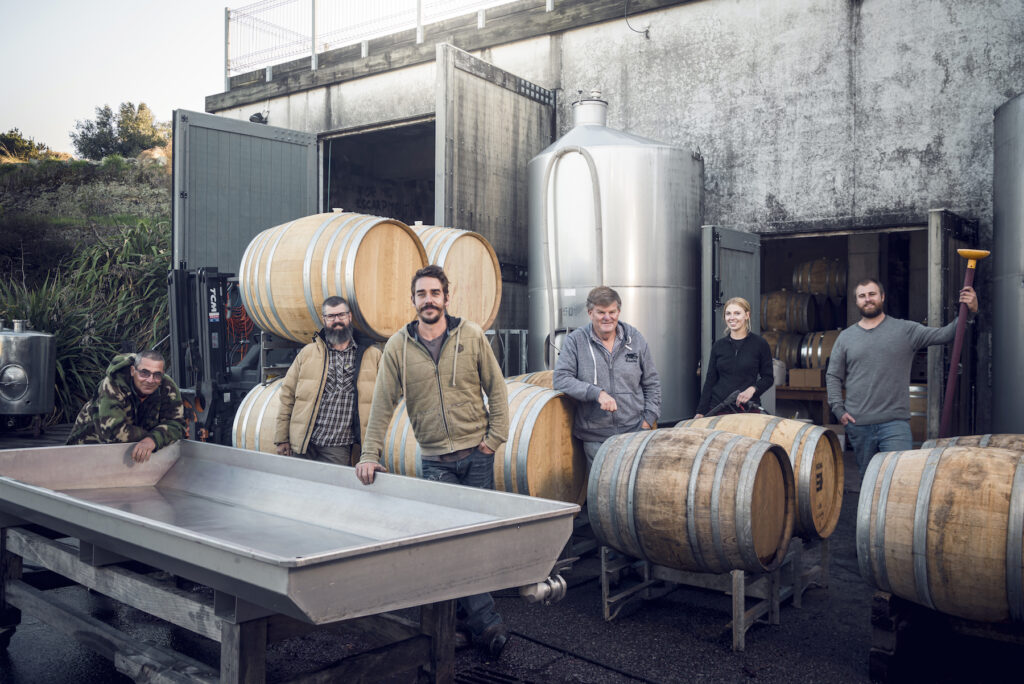
Anyway – onto what we’ve got here! Take a look at this map, and a look out the window! This river with successive floodings has always flooded in this direction and carved out all that land there and created what we call the Martinborough Terrace. The upper level which we’re on right here. There’s the escarpment – that edge right there. It starts down here at Craggy Range and goes all the way round to the Ruamahanga. It’s this soil type created by the Huangarua River. We take a few vineyards in here – there’s Kiwa, Kupe, Pahi and Te Rehua.
This was started off in ’99 as a joint venture partnership with an Australian family – with vineyards in the Mornington Peninsula, and that got their attention more than this – we were too far away. After GFC they had to rationalise and we were put on the market at that point, but it never sold until Torbreck picked it up a couple of years ago now. Torbreck are owned by an American, Pete Kight, who made a lot of money out of PayPal type platforms. He’s also got wineries in Sonoma and Napa Valley. It’s been a blessing in this environment – we’re the cool climate end of their portfolio and we have great distribution and more exports to a lot of countries. It’s all very well having the vision and making the wine, but it’s got to be turned into money. That’s the clever part.
WF: My local wine shop is First Glass in Takapuna – you’ll obviously know Kingsley well. And they sell a lot of Chardonnay there, but they have a decent selection of Pinot too. I’m always trying to get them to stock some new discovery that I’ve made, but one thing they do know there – is what people like, and what sells. If Kingsley was 30 rather than the age he is, he’d be a modern-day influencer – on social media because that’s really what he is – he’s a very influential person in New Zealand wine. I love the Wednesday night tastings, although it’s a bit of a cult – the folks sit there nodding “yes, Kingsley… whatever you say…”
Speaking of cults – I’ve just finished an article about Cult wines. Do you have any thoughts about that – what make a cult wine?
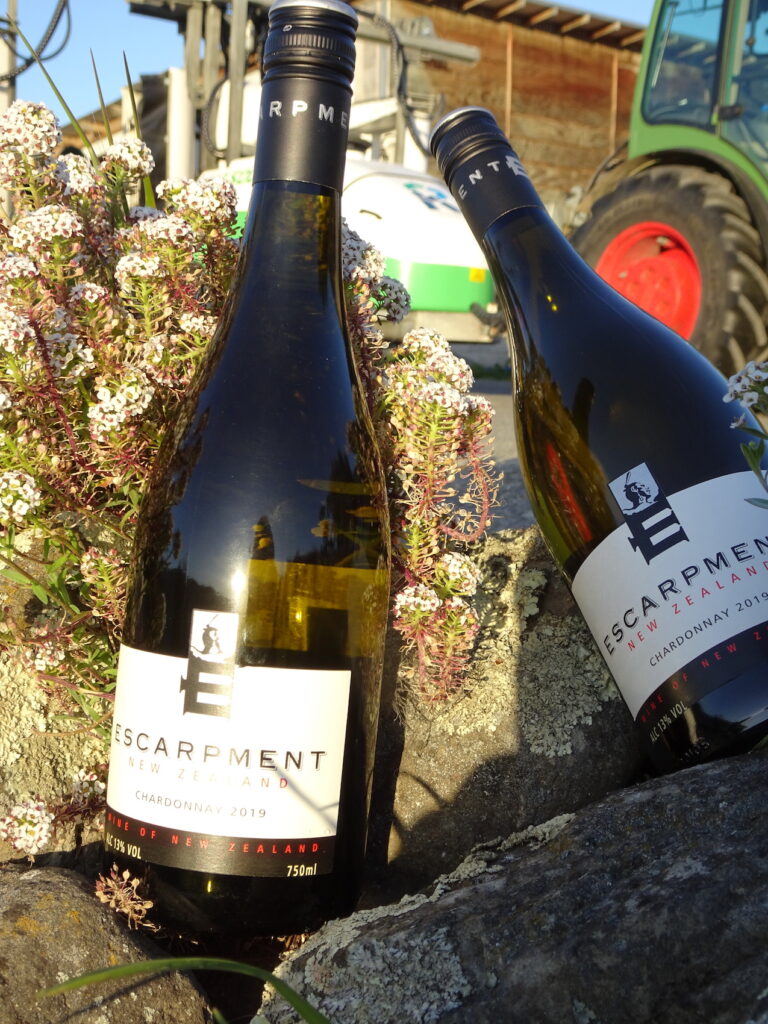
LM: That’s a very good question, and we spend our lives thinking about cult wines because they go for so much money. And they’re not necessarily demonstratively better wines. But they’ve got the aura. Felton Road’s got an aura. Ata Rangi’s got an aura. And it’s also time. You don’t just become a cult wine overnight.
WF: Or do you? Do you suddenly burst onto the scene and you’re a cult because you’re unknown? I’ll give you an example – Helio, from Hawke’s Bay. So it’s Mat and Sarah Kirby’s side project – they obviously have credentials, and he’s just made the Champion Wine in Show. It’s a single varietal, made in tiny quantities, and all sold out En primeur. So people are all buying this wine that no-one has tried yet, and it creates this low-level buzz about it. Because no-one can get it, or try it, retail anyway. And once it’s out in a select few people’s hands, it gets good reviews, but money literally can’t buy it. Cult wine.
LM: I think cult wines are an amazing phenomenon really. But what bothers me the most is that invariably they don’t really deserve the status. There’s a bit of trickery. Fair enough if you can do, you can do it. Some people would describe Cambridge Road as cult wine. Other people wouldn’t touch it with a bargepole, but he’s found himself a little niche and going way down that track into very much leftfield kind of wines. And people who like them are happy, even if 90% of the population don’t want to know. Again, Kusuda is a good example.
WF: That’s the name that always comes up. If you say to someone ’What’s a New Zealand Cult Wine?’ Bell Hill and Kusuda come up, every time.
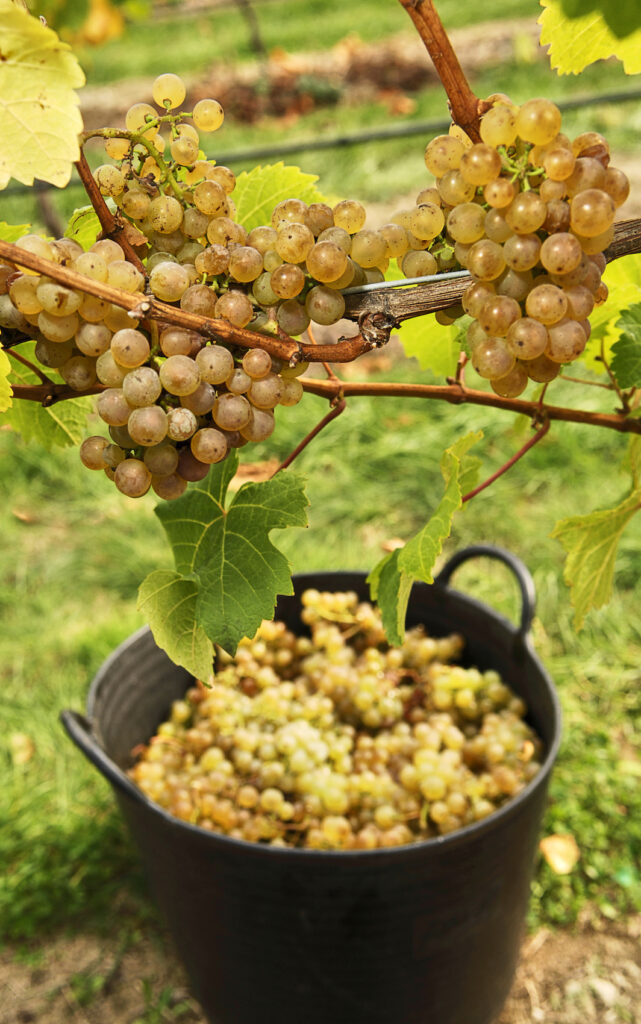
LM: Well, Bell Hill is very unique, and that’s another story. But Kusuda is sort of the same I guess. There’s a total attention to detail, but a real scarcity – and in Kusuda’s case it all goes to Japan. It’s all smoke and mirrors. Dry River were very good at it originally. They kept the stock very carefully distributed. You went to Australia and you saw it everywhere! But here it created this aura. It’s all on allocation. I’ve tried Kusuda enough times to know it’s good. It’s very good.
WF: So it’s become a cult wine because it’s also very, very good. Or maybe it’s critically acclaimed and got really high scores – that whole 100 point Parker-isation thing?
LM: Quality is the first part of it. As with Kusuda and Bell Hill – the quality is certainly there.
WF: And with Bell Hill – I find that super interesting, because Marcel Giesen is also making wines that aren’t Cult Wines. I heard he was a big part of Giesen getting the Clayvin vineyard. Well I can buy a Giesen Clayvin Pinot Noir any day of the week. And if I really like it, and am happy to pay $50 a bottle for it, then how much better must Bell Hill be? It has to be at least 50% better than Clayvin – to justify itself?
LM: It doesn’t work like that (laughs).
WF: No, I realise that. And at the very top end, I think the differences are quite small. I’ve been able, not through luck, but because it was ‘my thing’ to try lots of Bordeaux First Growth wines, Grand Cru Burgundy, top American wines, and even some of what I feel are really good wines from down this way. Not just the best of New Zealand, but I do rate some of the top Australian wines as well. I’ve had Grange and a wine I really like is Yalumba Octavius. Even something like Sons of Eden from Eden Valley. I was talking to John Hancock about that and he said “If I’d made some money out of wine – not that anyone ever does – but if I’d made money, I’d love to settle up in the Eden Valley”.
LM: First step – he’s a South Australian. If he wasn’t a South Australian, he wouldn’t give a shit. I’m the same, I’m a South Australian and I know how beautiful Eden Valley is, and he’s right. It’s wonderful. You go back to your roots don’t you.
WF: So what is about Martinborough for you, what has kept you here?
LM: it’s Pinot Noir. Pinot Noir has kept me here, there’s no doubt about that. When you look at Martinborough, and the very unique soil type, with about the right amount of rock. You go to somewhere like Gimblett Gravels and I think it’s too rocky. Very free draining and very warm. It’s a very successful soil type. Then, we’re the driest place in the North Island, and the East Coast is the key to it. You’ve got to be in the rain shadow. If you’re anywhere else it’s too bloody wet and humid. To be fair Gisborne’s like that but James Millton can grow organically there, but it’s a hell of a challenge. Here and Central Otago it’s easy because we have a dry summer.
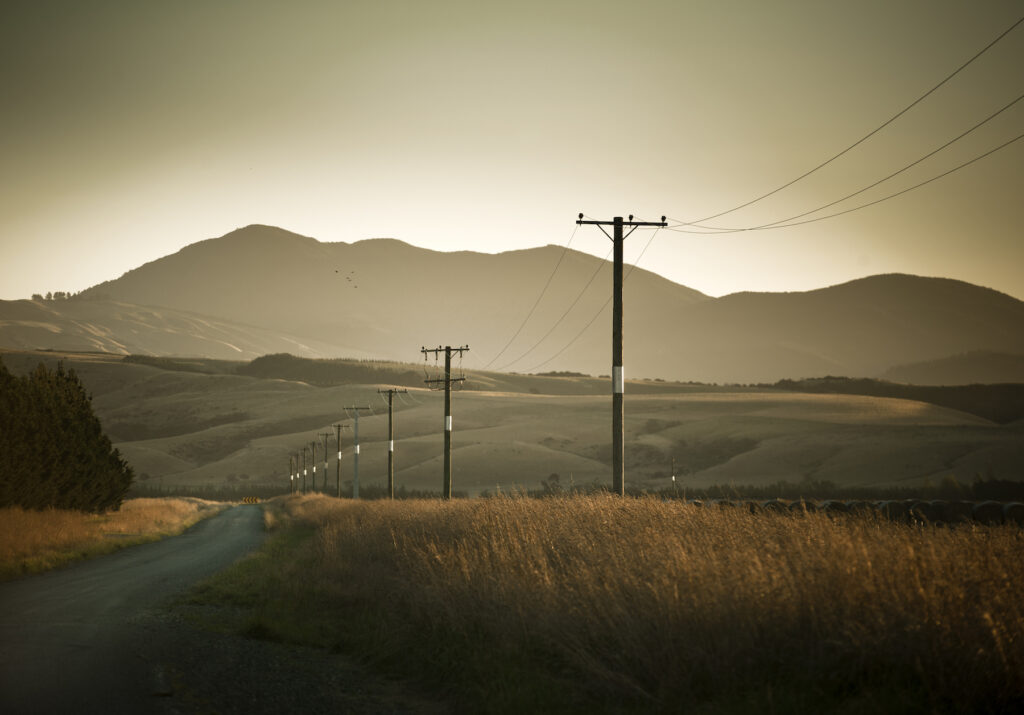
I have to say, I would move to Central Otago in a heartbeat. When we started this it was after Martinborough vineyard in 1998. I looked at it all and I had some opportunities in Central Otago and I was very very tempted. And I think, with hindsight, as John said – I think I would have made some money if I had gone down there. And we would have had a lot of fun, but we looked at the whole position we’d created, and the brand was McKenna Martinborough Pinot Noir. So don’t change too much. We wanted to continue with that, and I had a JV partner in this who was prepared to invest. So there were some practicalities to the decision. But I do think that this sits in the middle a little bit. It’s not necessarily an attribute, but it’s a little more assured of its climate and therefore the wines that are coming out, than Central Otago. Central Otago is on the edge. When they get it right it’s fantastic, but it’s still on the edge.
WF: Martinborough is easier to focus on the wines. In Central the distractions – Queenstown, lakes, mountains, the beauty of the place. But, I guess who wouldn’t want to visit a few wineries with that backdrop?
LM: We touched on it earlier – it has an aura. You don’t go there and enjoy the wine, you come away refreshed and revitalised, and by the way I had some fantastic wine!
WF: So – advice to your younger self? Is there a different path you could have taken – made the move to Central Otago?
LM: In hindsight I perhaps should have taken up an opportunity in Central Otago. Some people might have been able to do both, but I couldn’t, not successfully. I’m involved in Central, and have been for a very long time, on a consulting level so I go there regularly, but every day I drive in and out of here and I know it. I know what the weather’s done, how the season has developed in every aspect.
I wanted to make great wine. One of the things I learnt at Delegats, in my first life, was that you were never going to make great wine when it arrived in a 25 tonne truck. You didn’t even know if it had got picked that day. You just got four trucks. And one of them happened to be the most important crop of Gewurztraminer that you were going to take for that vintage. You didn’t even know it was coming! So you’re receiving 100 tonne of fruit a night and just putting it through the machine. And I didn’t want to do that. I wanted to be involved from the ground up.
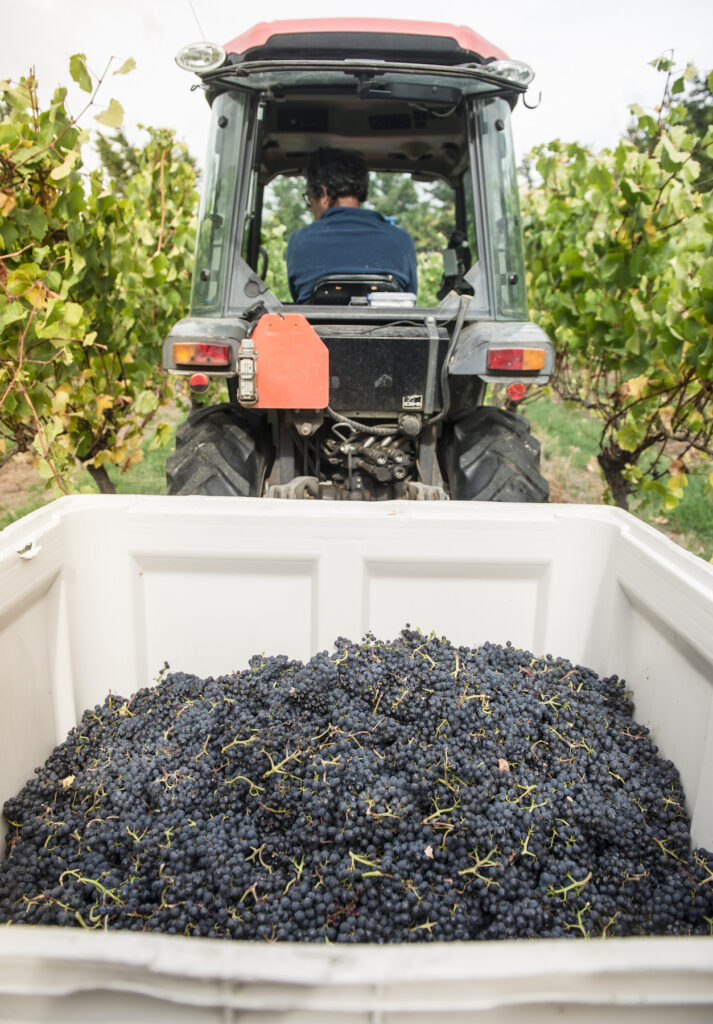
So Central would have suited me. I spent a lot of time in rivers and mountains when I was younger, and would have been very happy down there. It’s not over yet, I’ve a bit of time. I am looking for the next opportunity. It’s just that McKenna Martinborough Pinot Noir brand – it’s very compelling.
WF: I like what Tony Bish is doing – just concentrating on Chardonnay. It gives him a distinction above all else.
LM: I think Tony has been very smart. That was up for grabs, what he’s done. Everyone had that opportunity. We’re all doing Chardonnay. We do it and just put it on the shelf. He had a go, stuck it out there and went to the Egg thing and created a genuine bit of interest. He’s a good lad.
WF: Does that label stick to you a bit – are there other things you would like to do, but being the Pinot Noir specialist holds you back?
LM: I guess it’s inevitable but you just become more and more focussed. I’ve learnt what I enjoy. I’ve learnt what I know better. Concentrated on two things really – it’s Chardonnay and Pinot Noir. I don’t really drink that much else any more, if I’m left to my own devices. There’s enough to know about them, and enough to enjoy in them.
I’ve got one more project here. We’ll build the 300 tonne winery on top of the Barrel Room and that’ll be a 5 million dollar project. Get consent before vintage and get started straight after vintage next year. COVID has played into my hands a bit because Torbreck can’t come and visit, so I’ll be more involved in it than I might have been. And it does complete my vision. Finally we got a backer and someone who’s prepared to spend the dough. I’d like to see that commissioned for the ’22 vintage, and in the meantime I hope I’ll come across something else.
Going back to the cult labels, and for me, Bell Hill, the way they’ve gone about that and I credit Sherwyn with a lot of that. I think Marcel would be happy with me saying that, although I’m not entirely sure. Sherwyn looks after the vineyard. Go and take a look at the vineyards. They’re perfect. Absolutely perfect. No wonder the wines are incredible, because the vineyards are immaculate. That’s a very good model and I think there’s room in Martinborough for a smaller, iconic wine. I don’t think Martinborough has made the best wine it’s ever going to.
WF: Also at iconic places like Pyramid Valley – they were just trialling the site, with the best blocks still to be planted. I don’t think we’ve seen anything like the full potential of New Zealand wine yet. To say the best is yet to come, is an understatement!
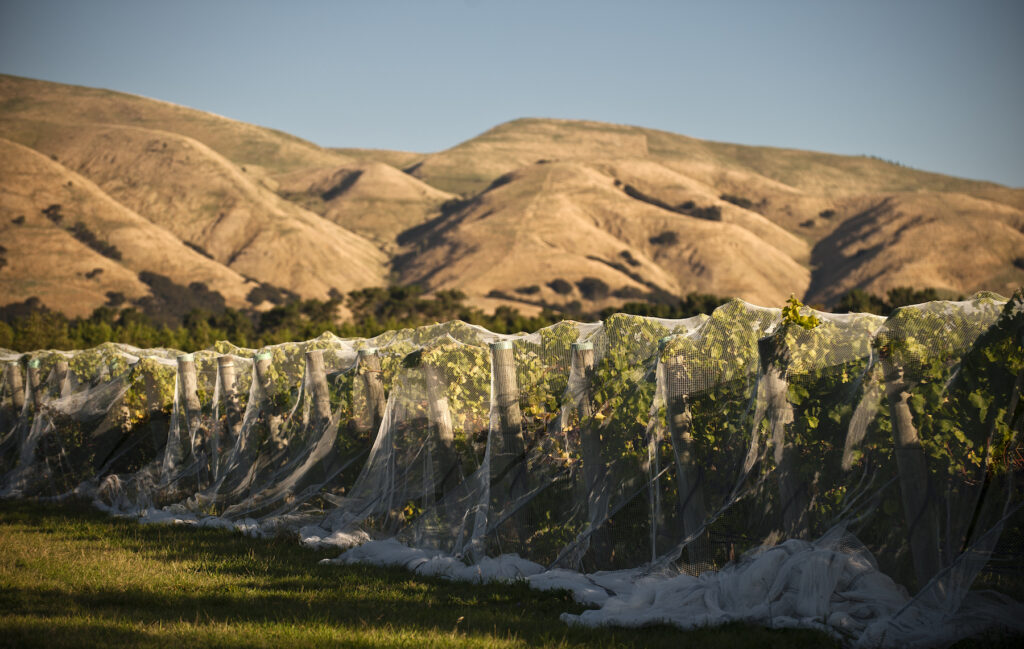
LM: And the best thing that New Zealand, or even just this district, could do would be to go 100% organic. And if we were that would be such a strong message to the rest of the market. If everyone in the world knew that when they picked up a bottle of Martinborough wine, that is was organic. You just need one little reason for them to go there rather than elsewhere.
WF: is there an ‘A-ha’ moment in the year for you?
LM: Well, the day you pick it! (laughs) Well you can look at it the week before and think about it, and you know it’s going to be OK if the weather holds… but anything can happen. In the shed.
We’re organic and we don’t put anything in it. All we do is squash Pinot Noir and put it in the tank. Well the other moment in all of this, the magic in it, is that 3 to 5 days later, it’s fermenting. Every year that never ceases to amaze me. I’ve done it so many times, seen it so often. It starts changing, creating this beautiful perfumed aroma. Starts turning sugar into alcohol, from something totally unstable to something relatively stable. And you didn’t do a f***ing thing! You just squashed it. And you can say you don’t even have to squash it. If you’re in Beaujolais you just put it in the tank. And when that process starts all by itself, it never ceases to amaze me. There is a God.
WF: During lockdown level 4 I had this Zoom Seminar thing, where the discussion was about could Food and Wine become the next big things for New Zealand tourism-wise. And I argued that we have excellent raw ingredients, but the one key ingredient that we farm, and then turn into something truly world-class is wine.
LM: And more than that – we put a label on it that says NEW ZEALAND. The brand, the words New Zealand. It’s on the table. The bit of lamb – that doesn’t have a flag on it. And it’s easy to share with people.
WF: how did you cope with the harvest during lockdown?
LM: Pretty good. We were in the middle of it. And we were very concerned until that afternoon and they said we had the Essential Service classification. We took a day to reorganise ourselves. The bubbles and everything. The long and short of it was that here we had the second biggest harvest ever. And a couple of people disappeared immediately including one key staff person, so we made adjustments – got three bubbles together. There was no crossover – you stayed in your bubble. And it meant that we didn’t have all the drinks after work, and dinners at night. We just got on with the job, and there was no interaction outside work.
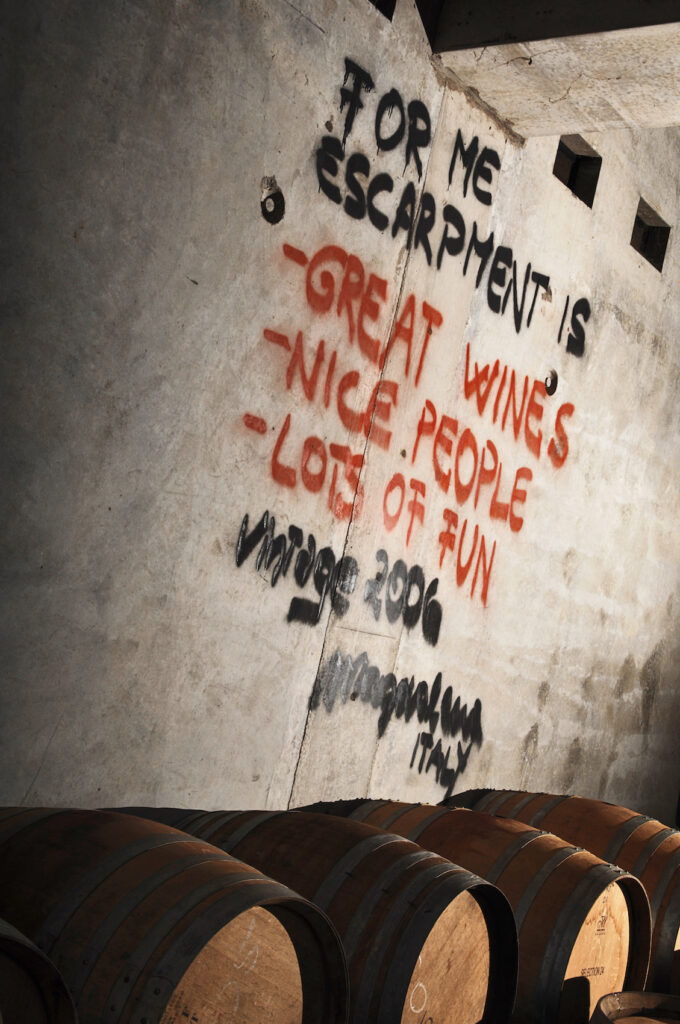
WF: And made good wine. People will remember it if it’s good as being made during that big Lockdown in 2020.
LM: well it was a fantastic year and we’ve got some very good wines – we’ve very pleased with them. The other side of it was that normally we’ve got visitors in who want to be a part of it – trade, writers, whoever.
WF: Of course COVID could have a long tail in that you may not have the pickers this year.
LM: we’ve got the staff we need for vintage. What we won’t have are the backpacker pickers. It’ll be business as usual except we may have to machine harvest some of it. Some of the wines could be machined, and it’s not our preference but it would get us out of trouble.
People argue that you get the machine set up correctly on the right grapes, you don’t need a de-stemmer or a crusher. You take it straight from the vineyard to the tank and there’s a lot to be said for that. We’re always trying to minimise the handling.
WF: tell me about this bottle you dug up. That’s an interesting story.
LM: When we planted this vineyard in ’99 we had a little ceremony with the local Maori spiritual leader of the district – Aunty Sally. They did a blessing and under the first vine we put a bottle of bubbles that I’d made at Martinborough Vineyard. And we always knew it was there, but sort of ignored it and didn’t think it would have survived. Torbreck decided that block, which was on its own roots, needed to be pulled out during the winter this year. And so we worked out from photos exactly which vine it probably was. And with a bit of digging we found it, and it still had the cork in. Now we’ve got this quandary of what do we do with it? Because we’re going to be building this new building I wondered if we put it in a time capsule with some other stuff in there.

